Located in the heart of Barcelona, where the history of the city began, the Gòtic Quarter is an iconic neighborhood, we sought to understand its complex dynamics and whether its economic model could truly be called sustainable. From Roman foundations to bustling contemporary streets, the Gòtic Quarter embodies a story of transformation. But behind its charm, questions arise about tourism’s impact, gentrification, and the future of its historic identity.
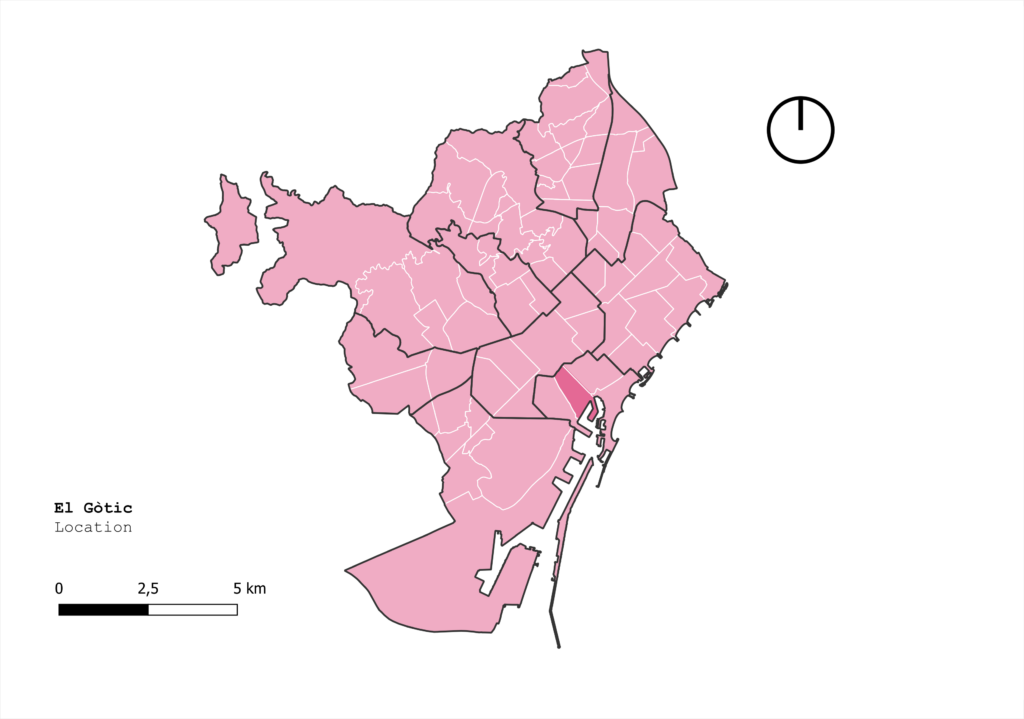
Data Source. https://opendata-ajuntament.barcelona.cat/data/es/dataset
Historical context
The Barri Gòtic lies in the heart of Barcelona—a mystique neighborhood that transports you to another time. It is the city’s oldest neighborhood, filled with narrow medieval streets, gothic architecture, and a maze of charming plazas. The neighborhood’s prime location, proximity to landmarks like the Cathedral of Barcelona, and historical significance make it a magnet for visitors from around the world. it was the political and religious center during the Middle Ages, highlighted by landmarks such as the Cathedral of Santa Eulalia and the Royal Palace. Today, its labyrinthine streets merge Roman and medieval legacies, preserving the essence of its rich cultural heritage.
Tourism is the driving force of the Gothic Quarter’s economy. It’s filled with a mix of bustling restaurants, boutiques, souvenir shops, and cultural attractions. Residents and tourists alike are drawn to its labyrinthine streets, but this popularity has led to overcrowding, rising property prices, and economic shifts that favor short-term profit over long-term community welfare. The area has also been shaped by the work of architects and urban planners who have turned it into a major tourist destination, contributing to the neighborhood’s constructed identity and branding as the ” Barri Gòtic.”
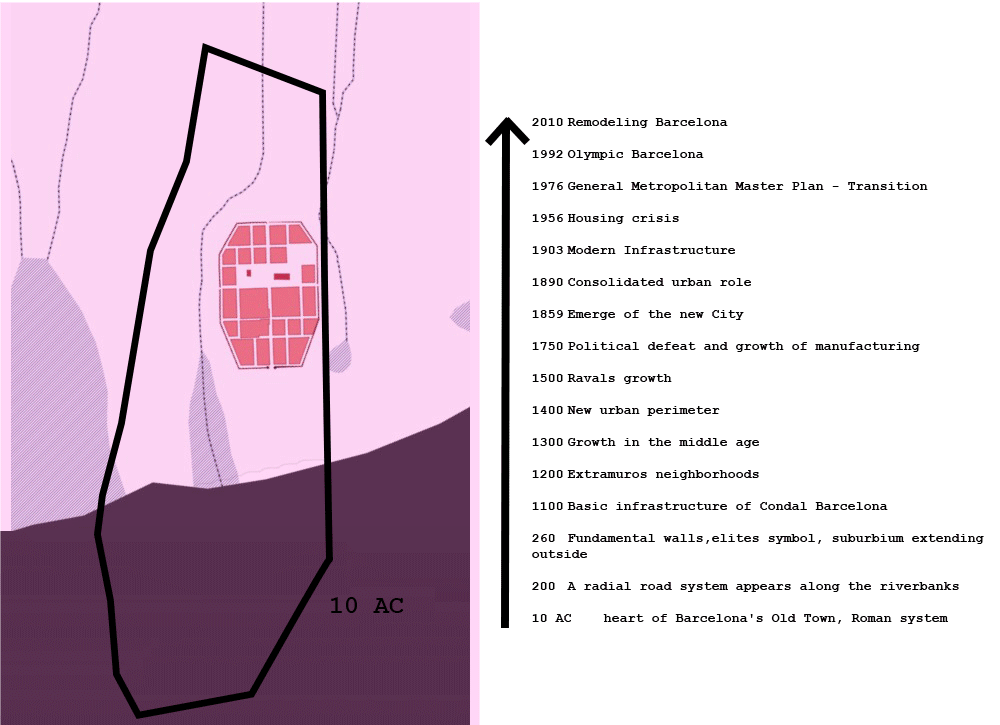
Data Source. https://www.barcelona.cat/museuhistoria/cartahistorica/index.html?lang=en#map=15/241979.67/5068814.62/2010//0/0/0/0
Founded in the 1st century BC as Barcino, it was the political and religious center during the Middle Ages
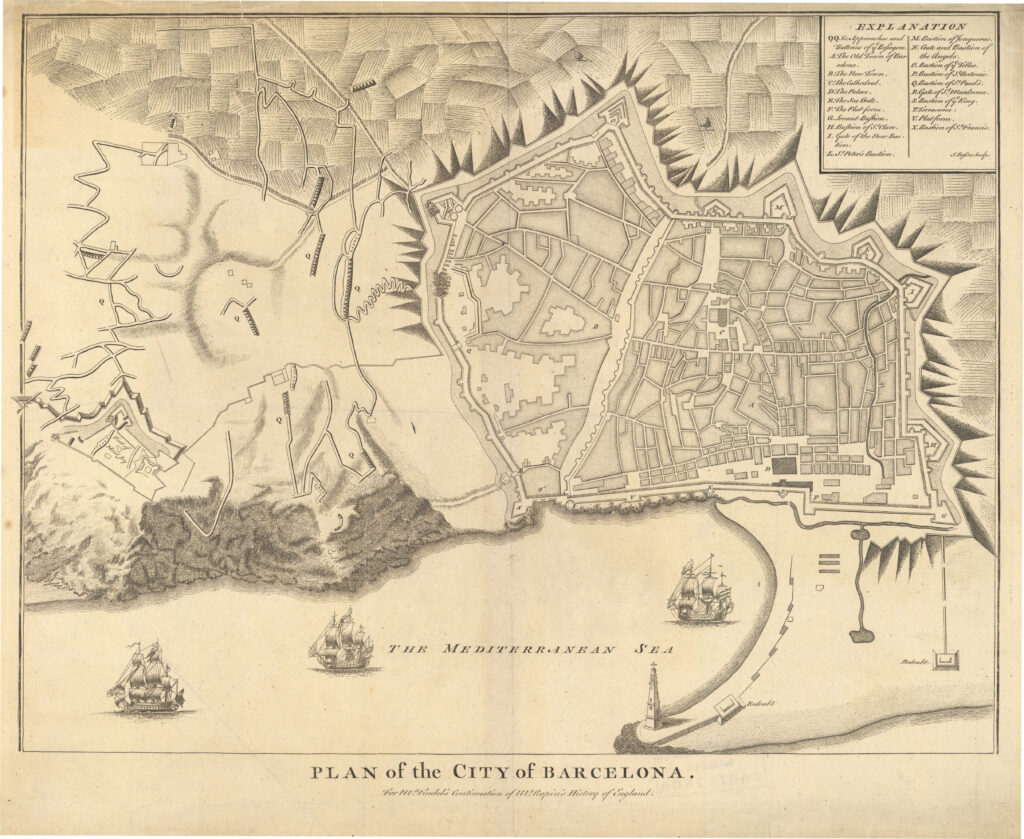
Data Source. https://centrodedescargas.cnig.es/CentroDescargas/busquedaIdProductor.do?idProductor=T0024502&Serie=CAANT#
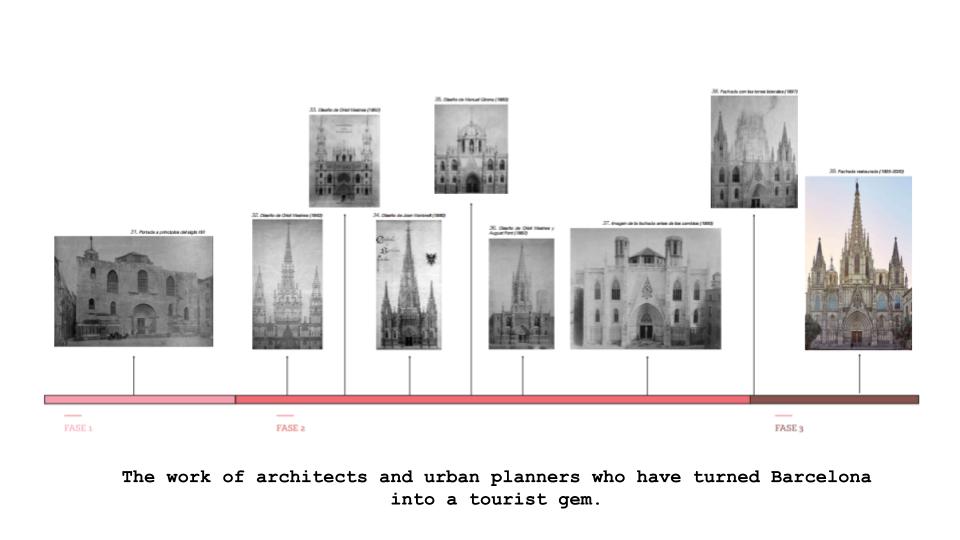
Current Challenges
The Gothic Quarter’s vibrant economy is driven by tourism, with millions of visitors pouring into its historic streets every year. This has led to significant economic opportunities: bustling cafes, souvenir shops, and tour services have flourished. Local businesses benefit from the constant influx of visitors, and the neighborhood has gained international recognition as a must-see destination.
However, with these economic gains come major challenges. The area has seen rising rental prices, both for residents and commercial spaces. Property owners often opt to convert residential apartments into tourist accommodations or Airbnb listings, as they yield higher short-term profits. This shift has created a shortage of affordable housing, making it difficult for long-term residents to stay. Gentrification is a major concern, as small, traditional businesses struggle to keep up with rising rents, and many have been replaced by high-end boutiques or international chains catering to tourists.
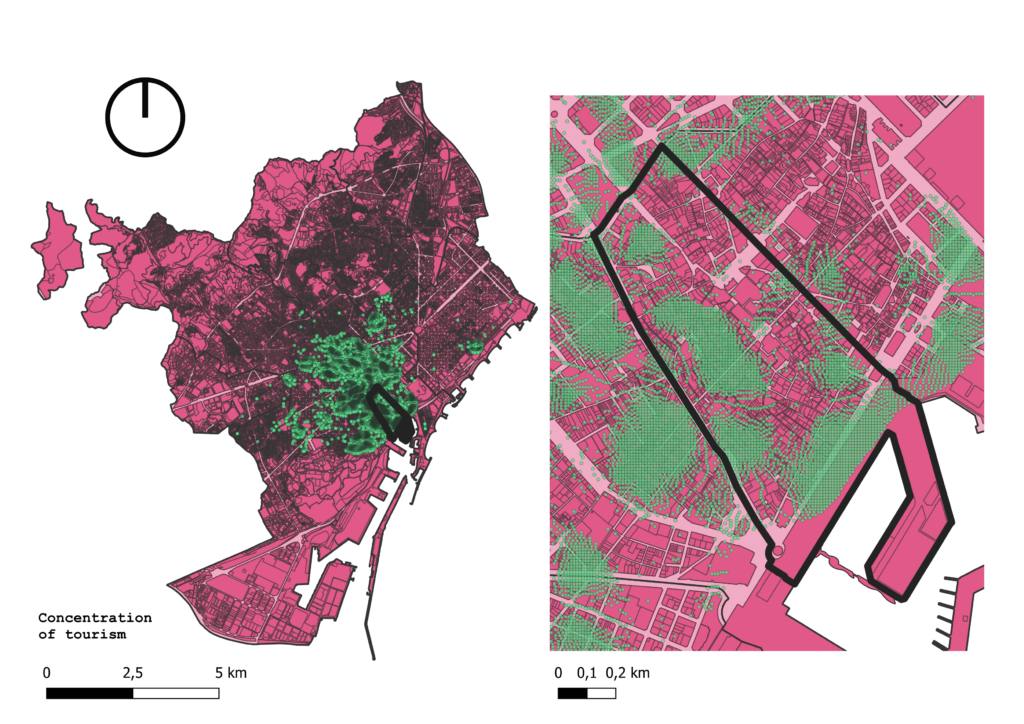
Data Source. https://opendata-ajuntament.barcelona.cat/data/en/dataset/intensitat-activitat-turistica
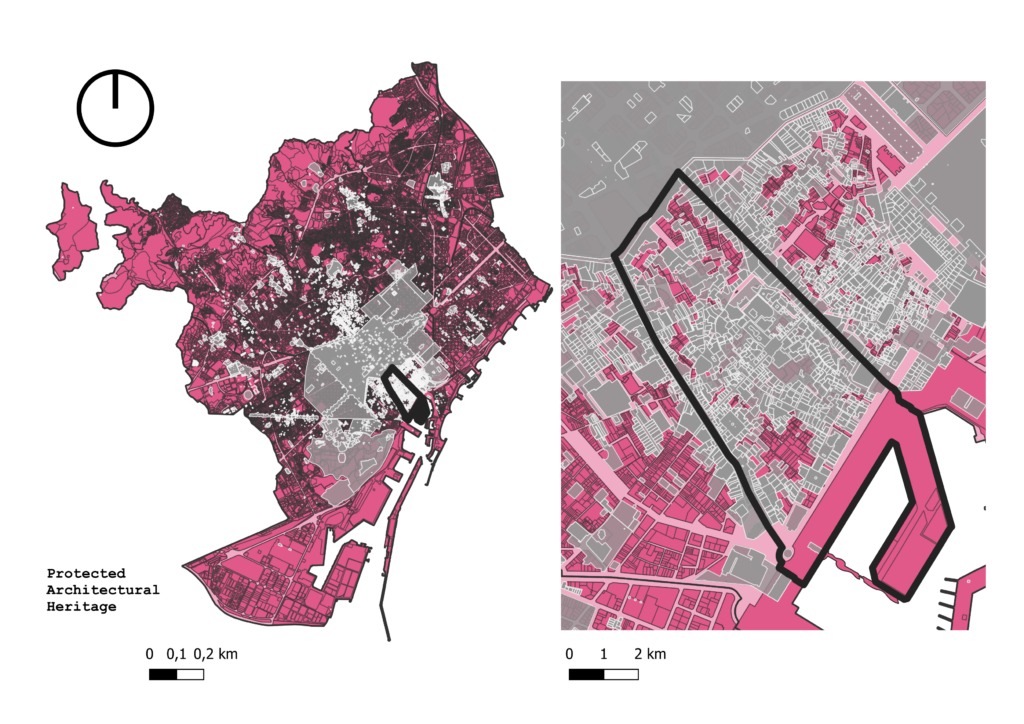
Data Source. https://opendata-ajuntament.barcelona.cat/data/es/dataset/patrimoni-arquitectonic-protegit
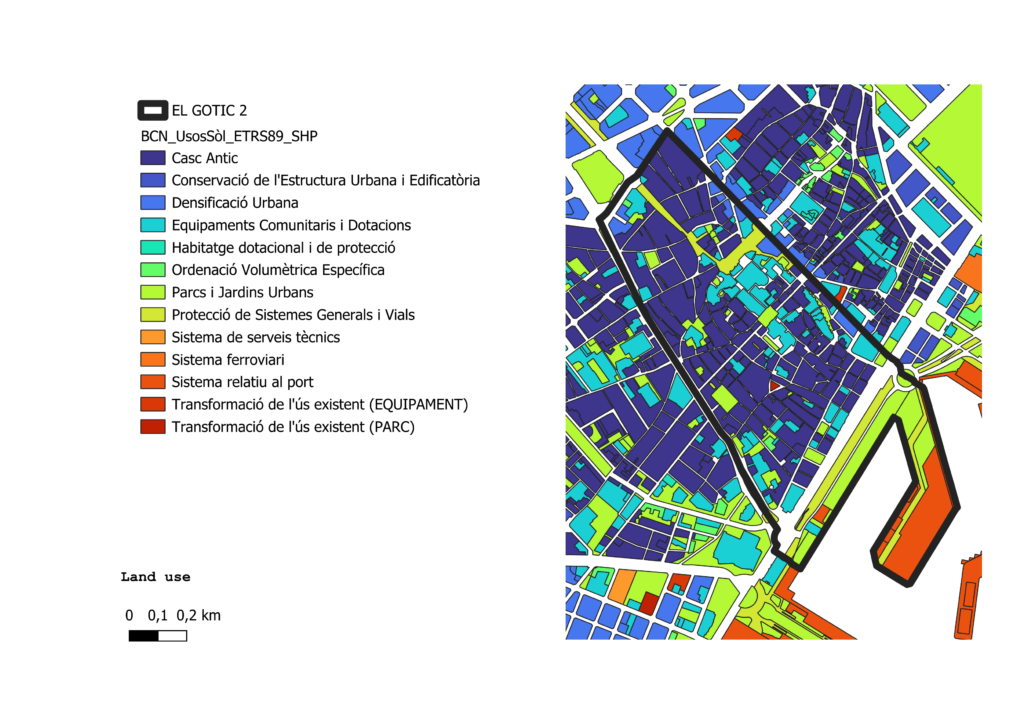
Data Source. https://opendata-ajuntament.barcelona.cat/data/es/dataset/mapa-usos-sol-wms
Municipal authorities have been actively trying to address the Gothic Quarter’s challenges. The Barcelona Tourism Strategic Plan includes measures aimed at managing tourism’s impact, particularly in neighborhoods like the Gothic Quarter where visitor numbers are high. Policies like the Special Urban Development Plan for Tourist Accommodation (PEUAT) have been put in place to regulate the number of tourist apartments, preventing further conversions in already saturated areas.
Recent efforts to revitalize public spaces—such as reducing vehicle traffic, promoting pedestrian areas, and creating green spaces—aim to enhance the quality of life for both residents and visitors. However, these initiatives face practical challenges, as the neighborhood’s historic layout limits the possibilities for large-scale interventions.
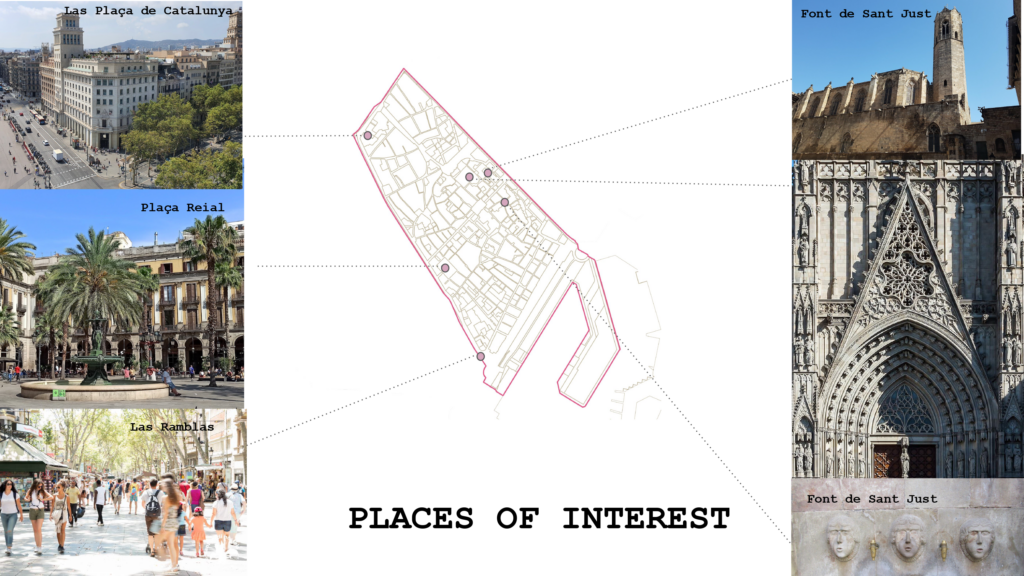
The economic model of the Gothic Quarter presents a dual nature. On one hand, tourism is an undeniable engine of prosperity, creating jobs and attracting investments that benefit the city. On the other hand, this same model raises questions about sustainability. How do we define a sustainable economy in a neighborhood where the needs of tourists often overshadow those of the residents?
During our visit, we observed attempts to balance these forces. The introduction of green tourism initiatives, such as promoting local crafts and responsible travel, shows promise. The municipal council’s emphasis on decentralizing tourism, encouraging visitors to explore less-known parts of the city, may also help relieve the pressure on the Gothic Quarter. However, these efforts need to be scaled up and supported by stronger policies that protect residents’ rights and ensure affordable housing.
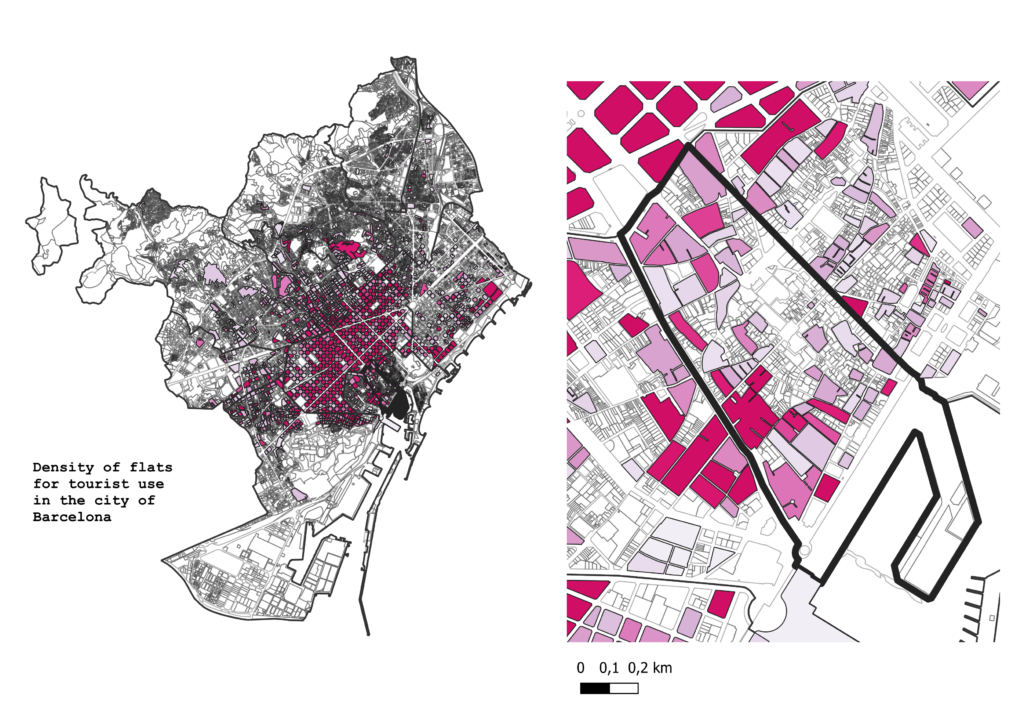
Data Source. https://opendata-ajuntament.barcelona.cat/data/en/dataset/densitat-huts
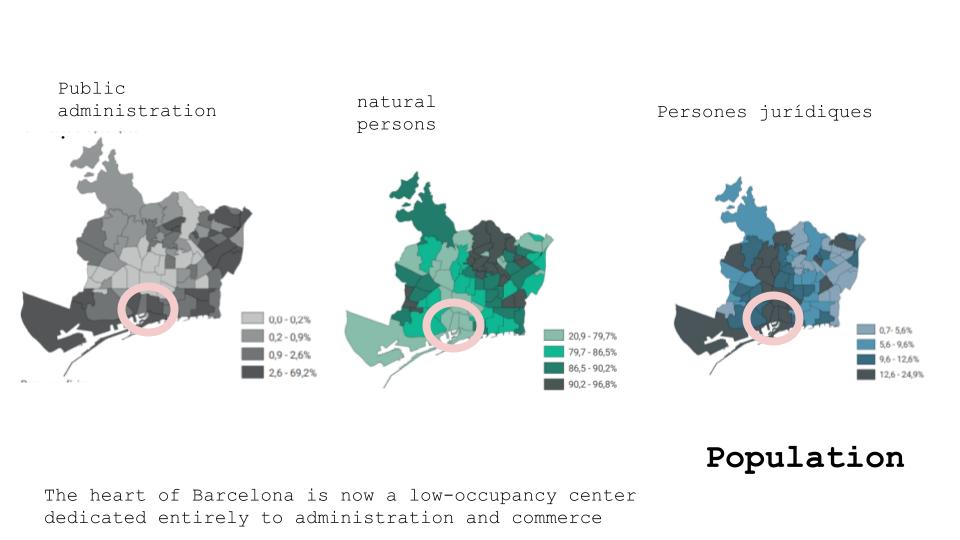
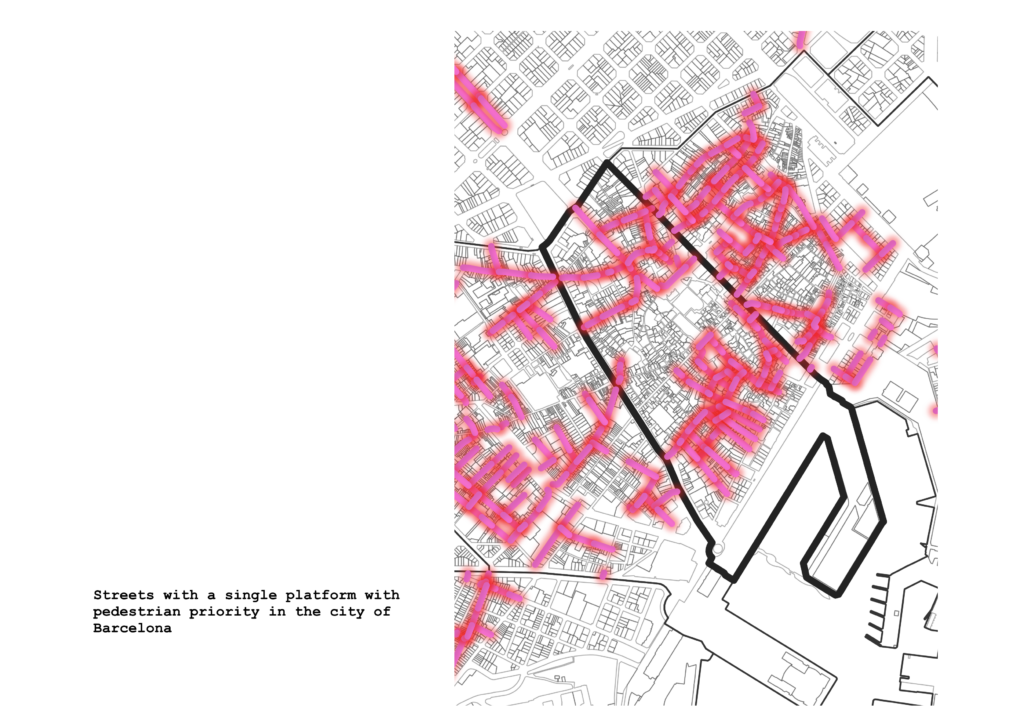
Data Source. https://opendata-ajuntament.barcelona.cat/data/es/dataset/carrers-plataforma-unica-bcn
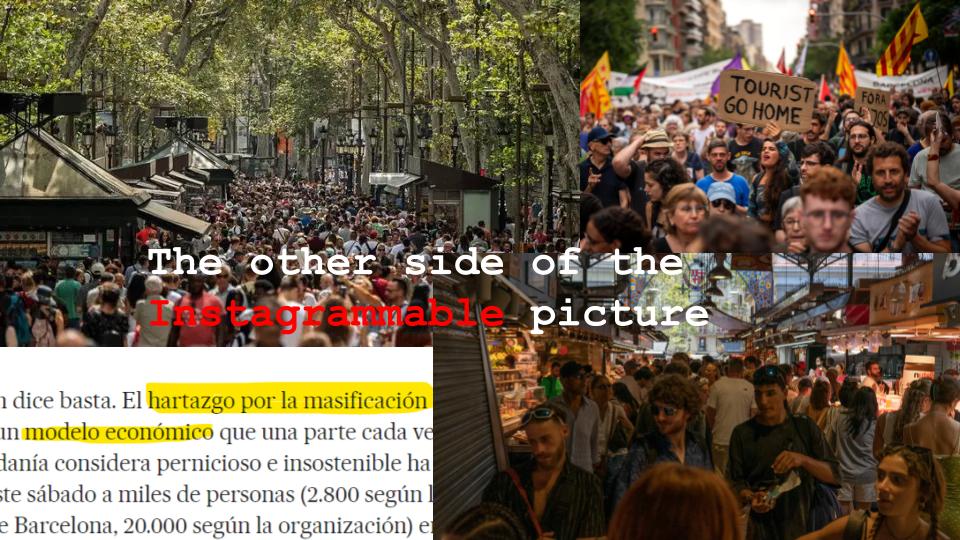
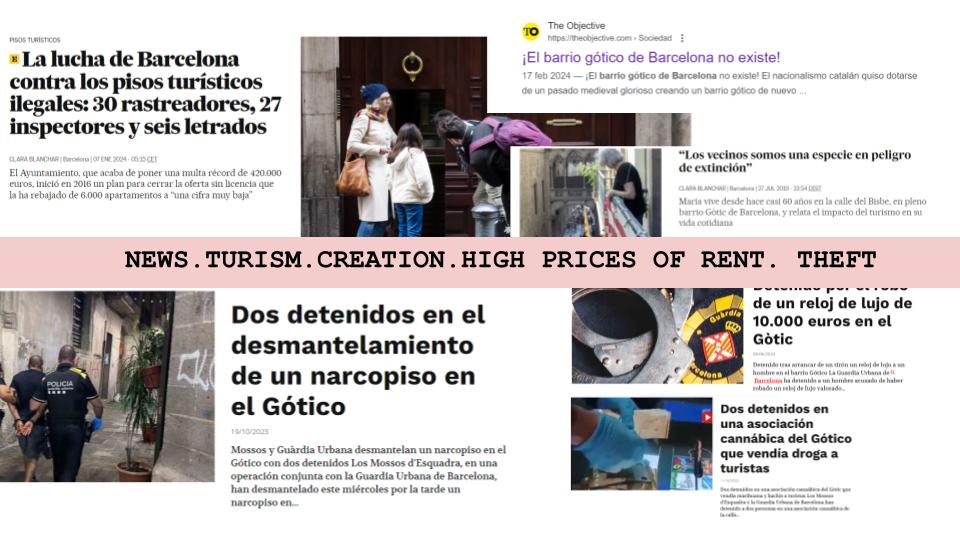

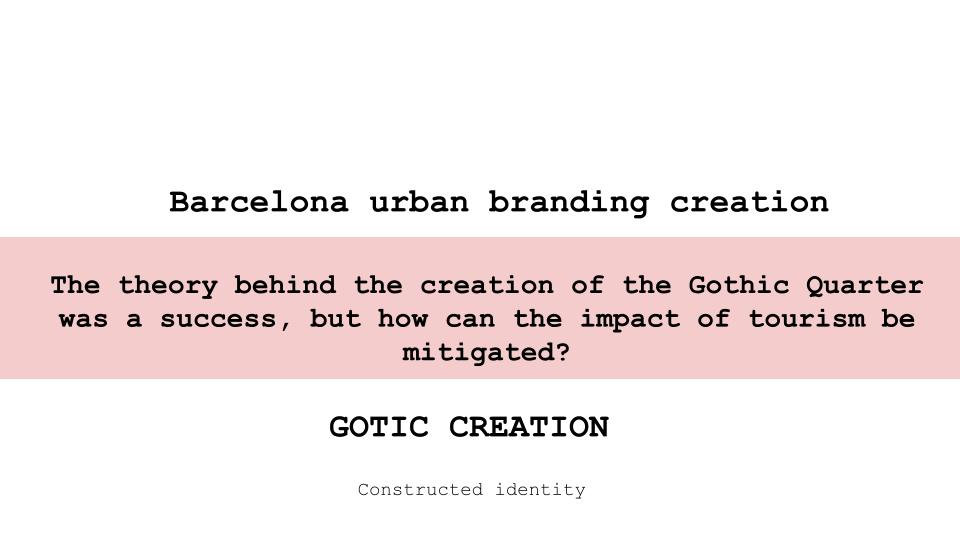
The Gothic Quarter’s charm and history make it one of Barcelona’s most beloved areas, but its current economic model is under scrutiny. Tourism has brought significant benefits, but it has also disrupted the neighborhood’s social fabric and contributed to rising living costs. To create a sustainable economic model, it is crucial to balance tourism with measures that preserve the community’s well-being. This includes limiting tourist accommodations, supporting local businesses, and fostering responsible tourism practices that respect the neighborhood’s heritage.
The future of the Gothic Quarter depends on maintaining this delicate balance. If done right, it could continue to be a thriving cultural and economic hub, providing both residents and visitors with a vibrant, authentic experience of Barcelona. A sustainable Gothic Quarter is possible—but only if the needs of all stakeholders are carefully weighed and addressed.

